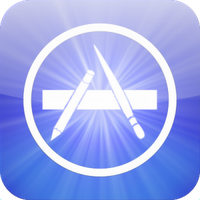
I spent a lot of 2010 playing with mobile
apps, mostly on iDevices.
It is clear that over that time, applications
have grown up and older in a very time.
As with all technology, mobile apps follow
a general “Moore’s law trajectory” and
quality (along with speed) is improving at
an exponential rate. We have gone from
apps that simulate simple real-world
activities, like memory and flash cards to
games that allow us to fling birds and onto
beautifully designed 3-D environments
through tools like the Epic engine.
The arrival of the iPad last year probably
had the biggest impact on children’s and
educational apps for mobile devices. Since
then, we have seen app developers
moving with alarming speed to get in first
with an app that will “wow” parents and
children.
This is not unusual. The iPad, combined
with iTunes, is like opening up a big empty
warehouse and saying, “People will buy
things here, what have you got to sell?”
This same process happened with the iPod
Touch and iPhones. It is what stimulates
the first wave of app development.
But, the first wave is almost over. Along
with those rushing into the market place,
coding quickly and (sometimes) planning
poorly, there have been builders and
developers working away quietly in their
workshops creating apps that they believe
in and have crafted to make people sit up
and notice. They are the leaders of the
second wave of apps, and they are
beginning to arrive.
That’s isn’t to say we don’t have some on
the scene already. I’d call The Elements,
Motion Math, The Monster at the End of this
Book, Toontastic and Infinity Blade all
leaders of the second wave (but not all of
these are educationally focused).
It is these apps that will really help
transform the learning landscape for our
children, as new apps begin to provide
space to be creative, to share that creativity
and provide experiences that can ’t be had
anywhere else. So, what will these second-
wave apps look like?
Attributes of a Second-Wave
Educational App
This is not a definitive list, but I’d like to see
the apps I explore in 2011 have five
attributes. A second-wave app may have
all or some of these:
1. The app can only exist on the
mobile device.
This means eBook apps that are just pages
with writing and maybe a music track don ’t
cut it. They could also be produced as
books. And, for the second wave this
means not just being interactive, but
hyper-interactive. The best examples of e-
books designed for mobile devices arte The
Elements or Solar System. By using all
aspects of media — video, photo, text and
audio interwoven into an intuitive
navigation system and aesthetically
pleasing design, they are setting the tone
for what we should expect.
It also means apps like Motion Math, which
use the gyroscope to turn math into a
physical activity. It links learning math with
kinesthetic intelligence. This can ’t be
recreated on a maths sheet.
2. The app maximizes the
opportunities presented by the
technical capacity of the mobile
device.
This is what Motion Math does. Using any
of the recording functions on the devices
also does this. But, the second wave
should take it one step further than the way
Oceanhouse Media and Kiwa Media engines
allow you to record a child’s voice while
reading. We want to see how video
recording can be used from the iPhone
camera, or what else could be achieved
with the Toontastic screen and audio-
recording functionality. How can we help
develop children ’s gross and fine motor
skills or excite their kinesthetic or spatial
intelligence using mobile apps and devices?
3. It allows children to create.
This is core to the second wave. We want
apps that will allow children to not just
consume and learn, but to demonstrate
their learning through a creative act. We
can open a drawing program, of course,
but we can use pencils and paper in the
same way. Toontastic has demonstrated
that it can help children tell stories in
creative ways. But, what else could children
be using apps for? How can we support
them to capture and edit their own films,
mix their own music ( Mixaroo is a nice
start), share their feelings and explore their
emotional intelligence?
4. It connects children to each other
and to the outside world.
These devices are connected to the internet.
So, beyond social network games that
model MMORPGs, how can apps allow
children to share with each other? Or, how
do we create apps that encourage them to
put the device down and go out and
explore the backyard? Children’s learning
needs to be holistic. Technology and
mobile devices are one facet, but to
become really powerful learning tools apps
must begin to take children beyond the
screen and connect to the world outside.
There has been discussion among several
of the Moms with Apps crowd about this
and I look forward to seeing how they
address this challenge.
5. It looks beautiful.
We have to invest more energy into design
of the user experience for children. The
knowledge is out there in terms of what
will work best for children, it needs to be
transferred into a digital environment. On a
simple level it will be bold colors, simple
lines and audio that engages. One good
way to test this out is to look at what
children are playing and engaging with
most, not in terms of sales, but in terms of
time. How much time a child spends with
an app will become important in assessing
how well the aesthetics work alongside the
broader design and operation of the app.
I know some apps out there are pushing
these boundaries. The second wave will be
exciting and creative. Let us know of your
favorites as they appear.
Source: Http://m.wired.com/geekdad/2011/01/2011-the-second-wave-of-childrens-mobile-apps-is-coming/
0 comments:
Post a Comment